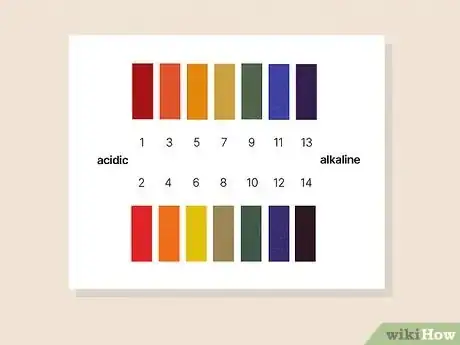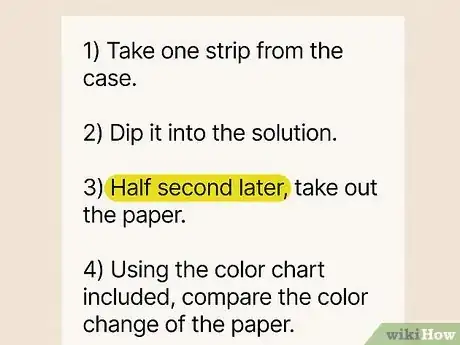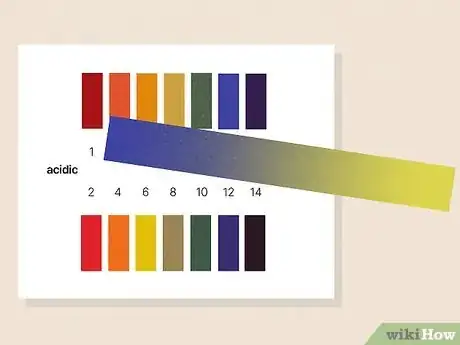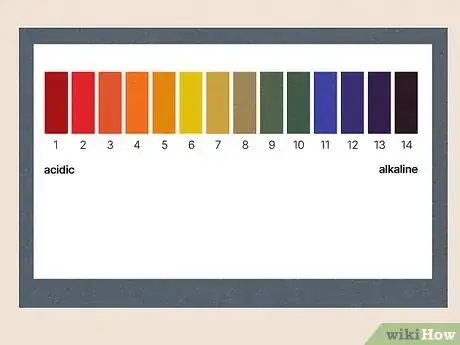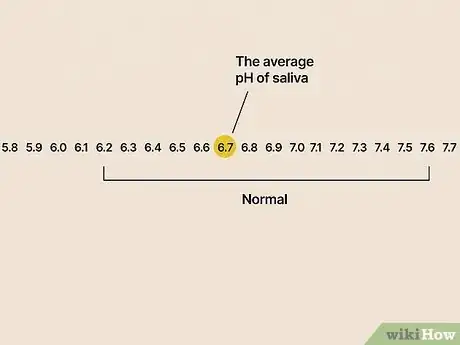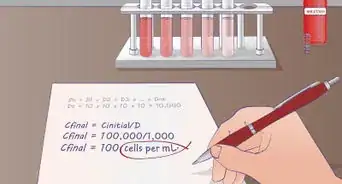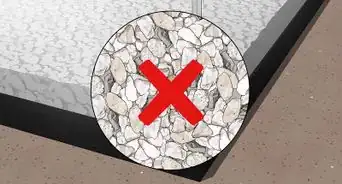This article was co-authored by Chris Hasegawa, PhD and by wikiHow staff writer, Amy Bobinger. Dr. Chris Hasegawa was a Science Professor and the Dean at California State University Monterey Bay. Dr. Hasegawa specializes in teaching complex scientific concepts to students. He holds a BS in Biochemistry, a Master’s in Education, and his teaching credential from The University of California, Davis. He earned his PhD in Curriculum and Instruction from The University of Oregon. Before becoming a professor, Dr. Hasegawa conducted biochemical research in Neuropharmacology at the National Institute of Health. He also taught physical and life sciences and served as a teacher and administrator at public schools in California, Oregon, and Arizona.
wikiHow marks an article as reader-approved once it receives enough positive feedback. In this case, several readers have written to tell us that this article was helpful to them, earning it our reader-approved status.
This article has been viewed 142,535 times.
If you’re interested in testing the alkalinity or acidity of a liquid, you can use pH strips to help you determine the pH level. If you’ve never used a pH strip, though, it might look like just a plain strip of paper, and the colorful chart looks like something you’d see in art class. Luckily, once you understand how the color coding works, reading a pH strip is easy!
Steps
Using the pH Strips
-
1Make sure your strips test the range you need. The pH scale covers a range of 14 numbers, where 7 is neutral. Lower numbers are more acidic, while higher numbers are more alkaline. Some strips only test a portion of that spectrum, so make sure the strips you buy cover the pH levels you want to test for.[1]
-
2Read the box to determine how long to leave the strips in. Some test strips only need to be left in the test liquid for about a second, while others need about 20 seconds to produce a reading. Be sure to read the instructions to ensure that your reading will be accurate.[2]Advertisement
-
3Dip one end of the test strip in the substance you want to test. You don’t need to submerge the whole strip in the test substance. Hold the strip at one end and dip the other end in the liquid, then remove it after the appropriate length of time.[3]
- You can use pH strips to test the pH level of any liquid.
-
4Compare the color of the strip to the chart provided. Your pH strips should come with a pH color chart. When your test strip has finished reacting, hold it up to the chart and compare the color of the strip to the color chart.[4] When you find the number associated with the color on the strip, you’ll have your pH reading.[5]
- Acids are represented by warm colors, such as red and orange, while alkalines are associated with cooler colors, like blue and green.
- If you're using litmus paper, the strips will either look pink or blue.[6]
-
5Look for a universal chart online if you don't have one. If you lose the chart that comes with your strips, or if your strips didn't come with a chart, you can look online for a universal chart. Even if you can't match your color exactly, you should get a close approximation of the pH level.
Knowing What to Test
-
1Test your tap water to make sure it’s acid neutral. Water is neutral, meaning it should have a pH balance of 7. Most drinking water falls in the range of 6.5-8.5. Test your drinking water to see if it falls within this range. If it isn't, there may be a contaminant in your water supply.[7]
- A pH meter is a quick, easy way to test this. Once you put the device in your sample, the meter will tell you what the exact pH is.[8]
-
2Keep your swimming pool balanced by testing the pH levels. A swimming pool should stay at a pH balance of between 7.4 and 7.6. Add a product made with soda ash if the pool is below 7.4 and muriatic acid if it’s above 7.6.[9]
-
3Test the pH levels in your aquarium if you have one. The pH balance in your aquarium is critical to keeping your fish healthy. Since the pH levels of natural waters vary, it makes sense that different fish would have different pH requirements. Make sure you know the best pH range for your fish and test your water to make sure it falls within that range.[10]
- There are a number of products available at pet supply stores to raise or lower the pH level of your fish tank.
-
4Measure the pH of your saliva to test your oral health. The average pH of saliva is around 6.7, but a normal range is anywhere from 6.2-7.6. If you measure your saliva and it is drastically different, your teeth are at a higher risk for cavities or gingivitis.[11]
- Make sure you don’t eat or drink anything for about 30 minutes prior to testing your saliva, as this can throw off the reading.
Expert Q&A
-
QuestionHow do you read a pH indicator strip?
 Chris Hasegawa, PhDDr. Chris Hasegawa was a Science Professor and the Dean at California State University Monterey Bay. Dr. Hasegawa specializes in teaching complex scientific concepts to students. He holds a BS in Biochemistry, a Master’s in Education, and his teaching credential from The University of California, Davis. He earned his PhD in Curriculum and Instruction from The University of Oregon. Before becoming a professor, Dr. Hasegawa conducted biochemical research in Neuropharmacology at the National Institute of Health. He also taught physical and life sciences and served as a teacher and administrator at public schools in California, Oregon, and Arizona.
Chris Hasegawa, PhDDr. Chris Hasegawa was a Science Professor and the Dean at California State University Monterey Bay. Dr. Hasegawa specializes in teaching complex scientific concepts to students. He holds a BS in Biochemistry, a Master’s in Education, and his teaching credential from The University of California, Davis. He earned his PhD in Curriculum and Instruction from The University of Oregon. Before becoming a professor, Dr. Hasegawa conducted biochemical research in Neuropharmacology at the National Institute of Health. He also taught physical and life sciences and served as a teacher and administrator at public schools in California, Oregon, and Arizona.
Retired Science Professor & Dean Take a good look at the color of your strip. Then, compare it to the color guide on the box that your strip came in.
Take a good look at the color of your strip. Then, compare it to the color guide on the box that your strip came in. -
QuestionMy pH test is 5, how can I improve my test result to 7?
 KnowledgeIsForeverCommunity AnswerA pH of 5 indicates your solution is acid and a pH of 7 means neutral. Therefore, you have to add a base. In the lab, you can do it with a sodium hydroxide solution - but be careful and always check your new pH with som more stripes or a pH meter! Keep in mind that this method is only appropriate for the lab and not aquariums (or any other systems).
KnowledgeIsForeverCommunity AnswerA pH of 5 indicates your solution is acid and a pH of 7 means neutral. Therefore, you have to add a base. In the lab, you can do it with a sodium hydroxide solution - but be careful and always check your new pH with som more stripes or a pH meter! Keep in mind that this method is only appropriate for the lab and not aquariums (or any other systems). -
QuestionWhat is the normal pH of the stomach?
 HanCommunity AnswerGastric acid has a normal pH between 1.5 and 3.5; about as acidic as undiluted lemon juice.
HanCommunity AnswerGastric acid has a normal pH between 1.5 and 3.5; about as acidic as undiluted lemon juice.
Things You’ll Need
- Universal pH strip
- pH chart on box
- Something to test
References
- ↑ https://sciencing.com/use-ph-strips-test-water-7869805.html
- ↑ https://sciencing.com/use-ph-strips-test-water-7869805.html
- ↑ https://sciencing.com/methods-determine-ph-ph-paper-8718437.html
- ↑ Chris Hasegawa, PhD. Retired Science Professor & Dean. Expert Interview. 29 July 2021.
- ↑ https://sciencing.com/use-ph-strips-test-water-7869805.html
- ↑ Chris Hasegawa, PhD. Retired Science Professor & Dean. Expert Interview. 29 July 2021.
- ↑ https://sciencing.com/use-ph-strips-test-water-7869805.html
- ↑ Chris Hasegawa, PhD. Retired Science Professor & Dean. Expert Interview. 29 July 2021.
- ↑ https://www.cdc.gov/healthywater/swimming/aquatics-professionals/operating-public-swimming-pools.html
About This Article
First, dip your pH strip into the liquid you want to test, like your pool water or garden soil. Read the instructions on the box to see how long to leave the strip in the substance. Once the right amount of time has passed, remove the strip and look at it to see what color it has turned. Compare it to the colors on the pH chart that came with the strips to determine the pH level of your substance. For ideas on what to test, keep reading!
